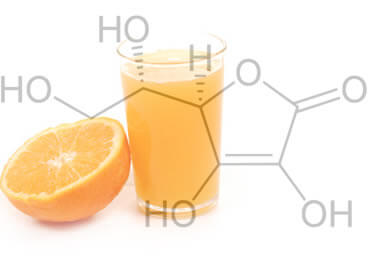Having studied dyes and concervants, we turn to antioxidants. What is it? Antioxidants are chemicals that can slow down or prevent the oxidation of other substances. As we remember from the school chemistry course, oxidation is such a reaction during which electrons from a substance with an oxidizing agent are transferred. Oxidation reactions can produce free radicals which responsible for initiating a chain reaction that damages cells. Antioxidants stop these chain reactions, helping to keep food color and taste attractive. In addition, antioxidants serve as “protectors” of certain vitamins and amino acids, which are easily destroyed by air exposure. In nature, there are many antioxidants. For example, ascorbic acid is a natural antioxidant. Tocopherols found in walnuts, soybeans, sunflower seeds and corn are also natural antioxidants that are used to preserve vegetable oil, margarine and cocoa products. Antioxidants are labeled with the E300-399 index.
The Most Dangerous antioxidants
Let's consider the list of the most dangerous antioxidants. . Е300-303 ascorbates of corned beef, sausages, canned fish, jams, puddings, sweets and pastries, chewing gum, beer, syrups, fruit juices and nectars. High doses of ascorbates cause diarrhea, tooth decay, and the formation of kidney stones, which can lead to glucosuria.
Е304 ascorbyl palmitate , is contained in mayonnaise, butter, promotes urolithiasis.
E306 Tocopherol, natural (Vitamin E) - margarine, mayonnaise, butter, flour and potato flakes. .
E307 E308 E309 synthetic tocopherols, in large doses, cause skin diseases and kidney diseases.
E310 E311 E312 gallates (propyl gallate - octyl gallate - dodecyl gallate) - contained in oils (excluding olive), chewing gum, margarine. Causes irritation of the oral mucosa.
E320 butylhydroxyanisole mdash; is used as an additive in oils and fats, chewing gum, potato chips (as a residue). It destroys vitamin D. Used to maintain the freshness of the flavor, it can cause allergies.
E321 butylhydroxytoluene - in margarine and hydrogenated fats, chewing gum, chips.
Е322 lecithin puddings, cream, cookies, confectionery, ice cream, chocolate, in high concentrations, can cause irritation of the intestinal mucosa.
E330 E330 E331 E332 E333 citric acid and its derivatives (sodium, potassium and calcium) - soft drinks, candied fruits, cream confectionery, bakery products, chewing gum, vegetable juices and nectars, fruit syrups. Large doses can cause skin staining and kidney disorders.
E334 E335 E336 E337 L-L-tartaric acid and its derivatives - drinks, ice cream, fruit syrups, juices and nectars, vegetables, sauces, puddings, baked goods, candied fruits.
E338 E339 E340 E341 phosphoric acid and its derivatives - carbonated soft drinks, cola, jelly. May cause digestive problems, rickets.
















